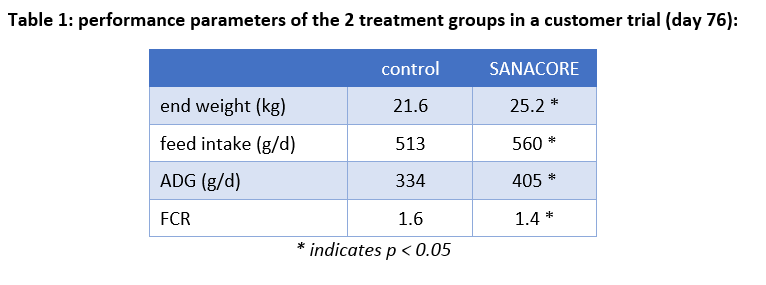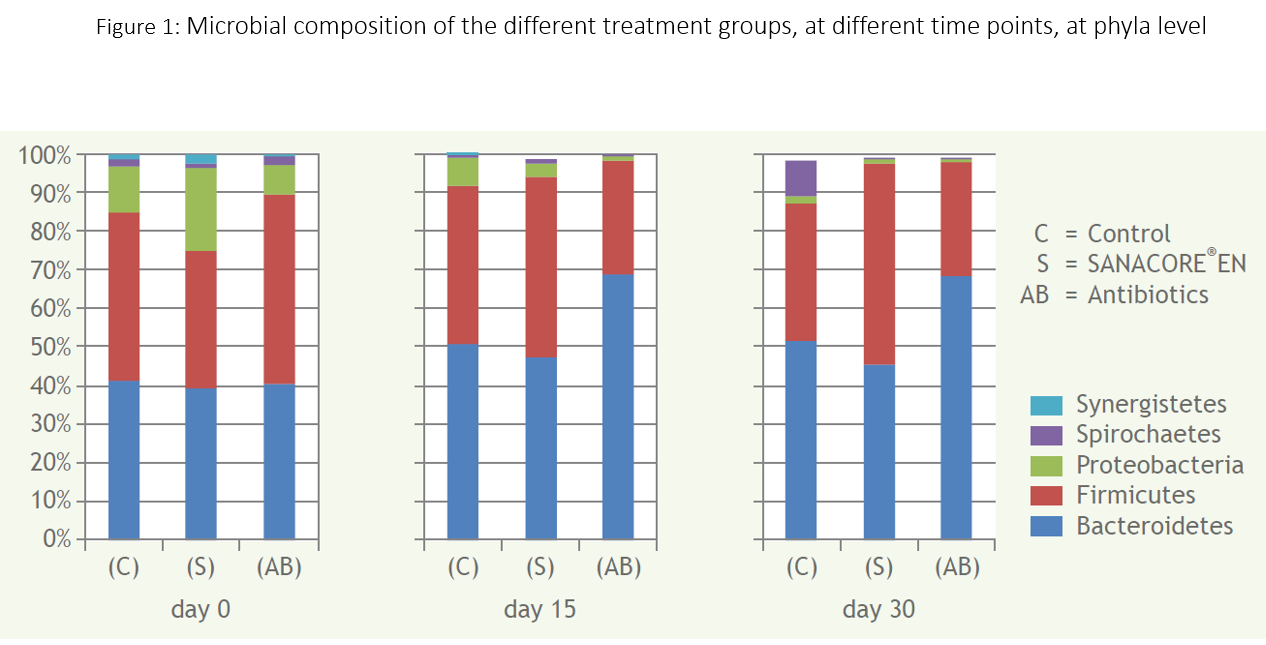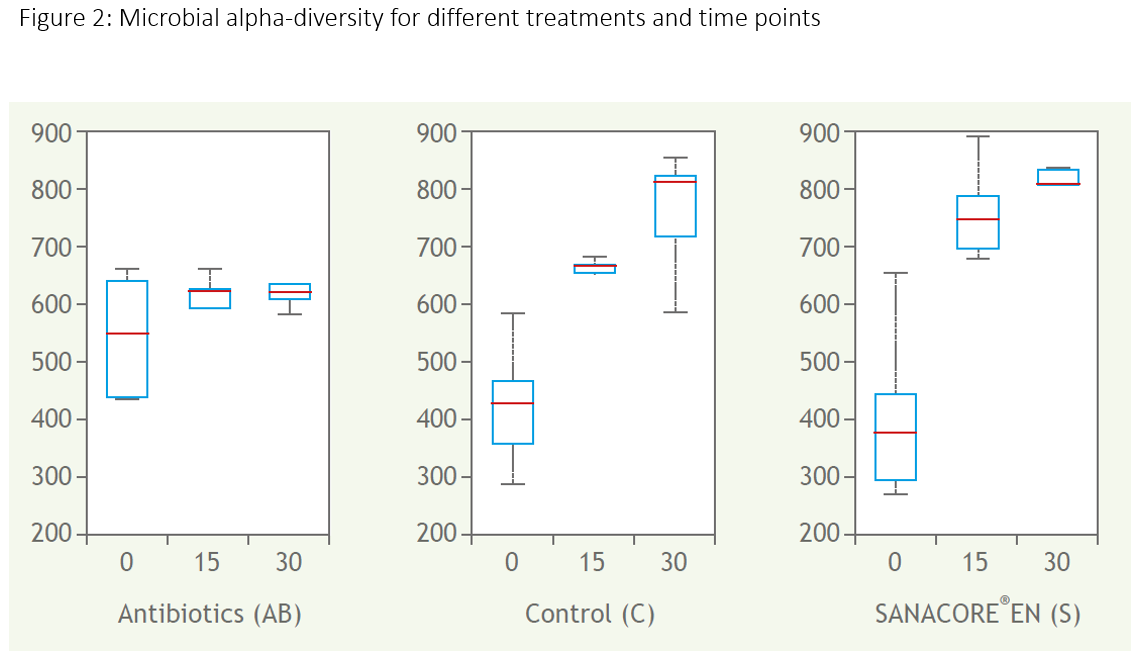



Antibiotics, zinc oxide and gut health promoting feed additives: learning from differences and similarities
Over the last decades, growth promotion and animal health in livestock production has been given an extra push by the inclusion of certain functional additions to animal feed, such as antimicrobial growth promoters (AGP) and zinc oxide (ZnO). However, in recent years, concerns have been raised about the negative side effect of these chemicals, paving the way for the alternative growth promoters.
Adverse effects of antibiotics
The growth promoting effects of AGP have been described more than 60 years ago. Already a few years later, concerns were expressed about the development of resistant human pathogens through subtherapeutic use of antibiotics in animal feeds. Nowadays, it is accepted that the over-use of antimicrobials should be tackled to secure their efficacy against human and veterinary diseases.
Moreover, recent studies in the field of human medicine are uncovering another drawback of the use of antimicrobials: antibiotic therapy in early childhood or in young animals may have adverse effects later in life, such as prediabetes, gastroenteritis and inflammatory gut diseases.
The challenges of zinc oxide
During the late 1980s, ZnO was discovered to reduce diarrhea and increase growth in weaner pigs. Unfortunately, as Zn is poorly absorbed, it becomes highly concentrated in manure, creating a risk of environmental pollution. In addition, it has other disadvantages as well, such as a reduction in feed palatability and the risk for co-selection of antimicrobial resistance.
This has recently prompted the European Medicines Agency (EMA) to recommend to withdraw all veterinary medicines containing zinc oxide altogether. Although a definite ban on ZnO may not be implemented in the immediate future, the EMA recommendation highlights the increasing pressure to limit the use of this chemical.
Learning from what AGP and ZnO have in common
The development of gut health stimulating additives might benefit from analyzing the working mechanisms of these compounds.
ZnO is not linked to one narrowly-defined enteric action, but has been described to affect the intestinal barrier function, the secretion of gut-brain peptides, colonic ion secretion and bacterial adherence to intestinal villi, to name a few.
Likewise, AGPs have been postulated to exert their effect through modulation of intestinal microbiota and via their anti-inflammatory effect. But as gut bacteria are increasingly being associated to have a direct effect on a plethora of signaling functions throughout the entire body, AGPs are likely to trigger numerous effects, both directly and indirectly.
It is therefore tempting to speculate that the success of these chemicals is explained by the width of their action range, rather than anything else: in a variety of farm environments, high-intensity production challenges and animal conditions, at least one of the many effects triggered by AGPs and ZnO is likely to contribute to health and performance.
SANACORE®EN: improving enteric performance in challenging situations…
Therefore, when developing a functional feed additive giving support during bacterial challenges, Nutriad has focused on a combination of components that provide an action range that is similar to the effects described for the products above. SANACORE®EN contains precision delivery coated short-chain fatty acids (including butyrate), medium fatty acids and an essential oil blend, with proven effects on intestinal integrity, bacterial colonization and immune modulation.
Such a product is expected to be particularly helpful in programs that attempt to reduce the use of ZnO and/or antibiotics. This was demonstrated by a customer trial, where 68 weaner piglets were allocated to one of two dietary treatments: control piglets were supplemented with 3 kg/T of ZnO during the prestarter (day 28-42) and starter period (day 42-76). Another group was fed ZnO only in the prestarter stage, and SANACORE®EN in the prestarter (3 kg/T) and starter period (2 kg/T). Production parameters showed and increased performance in the SANACORE®EN group at day 76 (Table 1):
Table 1: performance parameters of the 2 treatment groups in a customer trial (day 76):
… without negatively affecting gut microbial diversity
To explore whether comparable growth-promoting effects are associated with similar effects on gut microbial composition, 30 post-weaning piglets were selected from a production farm with recurrent problems of post-weaning colibacillosis and analyzed for microbial composition at the University of Lleida (Spain). They had received a diet with ZnO during the first week after weaning. After this first week, they were split in three experimental groups: a control group, a group that received antimicrobials (amoxicillin and colistin), and a group fed the feed additive (SANACORE®EN).
Interestingly, the relative contribution of the most dominant phyla (Bacteroidetes and Firmicutes) to the overall composition was similar for the control and additive-treated group, while the antibiotic-treated group had a more deviant profile (Fig. 1). Additionally, in the control and in the additive-treated group, but not in the antibiotic-treated group, species diversity increased substantially over time (Fig. 2).
Conclusion
Just as antimicrobials and ZnO, SANACORE®EN can stimulate health and performance in a challenging context, such as weaning. These three product types likely trigger a similar spectrum of mechanisms that improve intestinal integrity and reduce the consequences of bacterial challenges. However, the effects on the gut microbial composition are distinct: SANACORE®EN, unlike antibiotics, doesn’t have a negative effect on gut microbial diversity. This is likely to be important for the animal’s resilience against enteric challenges later in life.
In annex:
Figure 1: Microbial composition of the different treatment groups, at different time points, at phyla level
Figure 2: Microbial alpha-diversity for different treatments and time points











